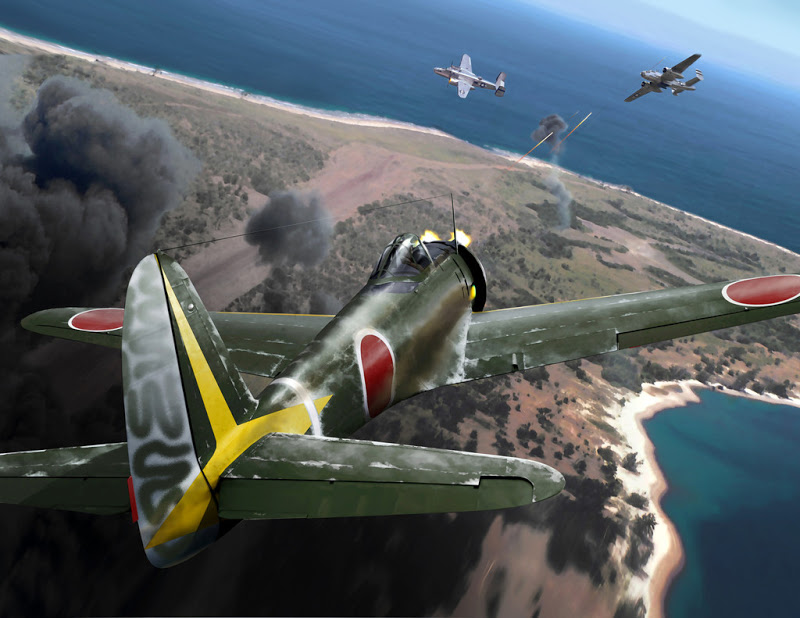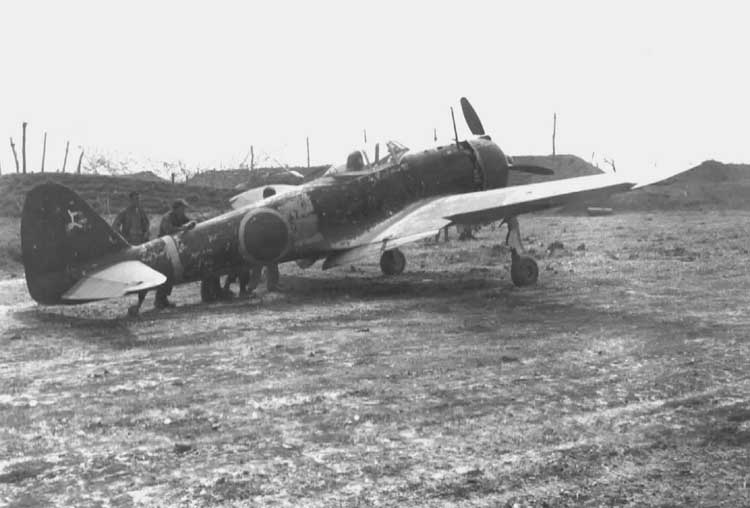Mala wzmianka historyczna z wikipedii
Nakajima Ki-43 Hayabusa (jap. 隼 sokół wędrowny?), nazwa kodowa aliantów Oscar – jednosilnikowy, jednomiejscowy samolot myśliwski Sił Powietrznych Cesarskiej Armii Japonii z okresu II wojny światowej.
Był najliczniejszym i najważniejszym myśliwcem lotnictwa armii japońskiej podczas wojny na Pacyfiku. Produkowany był od początku wojny do jej zakończenia w sierpniu 1945.
Samolot ten jest pod wieloma względami konstrukcją przejściową, wypełniającą lukę pomiędzy jednopłatowymi, lekkimi myśliwcami ze stałym podwoziem i otwartym kokpitem, konstruowanymi w późnych latach trzydziestych, a silnie uzbrojonymi ciężkimi myśliwcami wyposażonymi we wciągane podwozie i zamkniętą kabinę z wczesnych lat czterdziestych.
Ki-43 był często mylony, zwłaszcza w początkowej fazie wojny, z myśliwcem marynarki wojennej Japonii, Mitsubishi A6M, popularnie znanym jako Zero.

 [size=50]created by picasa2html.com[/size]
[size=50]created by picasa2html.com[/size]Ki-43-II
The Nakajima Ki-43 Hayabusa (隼, "Peregrine Falcon") was a single-engine land-based tactical fighter used by the Imperial Japanese Army Air Force in World War II. The Army designation was "Army Type 1 Fighter" (一式戦闘機); the Allied reporting name was "Oscar", but it was often called the "Army Zero" by American pilots for its side-view resemblance to the Mitsubishi A6M Zero[3] that was flown by the Japanese Navy, using essentially the same radial engine as the Army's Oscar, and with the Oscar having much less framing for its canopy than the Zero used.
Like the Japanese A6M Zero, the radial-engined Ki-43 was light and easy to fly and became legendary for its combat performance in East Asia in the early years of the war. It could outmaneuver any opponent, but did not have armor or self-sealing tanks, and its armament was poor until its final version, which was produced as late as 1945.[4][5] Allied pilots often reported that the nimble Ki-43s were difficult targets but burned easily or broke apart with few hits.[6] In spite of its drawbacks, the Ki-43 shot down more Allied aircraft than any other Japanese fighter and almost all the JAAF's aces achieved most of their kills in it.[citation needed]
Total production amounted to 5,919 aircraft.[7] Many of these were used during the last months of the war for kamikaze missions against the American fleet.[6]


Sam modelik taki sobie ,moę sobie go skleić każdy ten bardziej i mniej zaawansowany modelarz.Wiadomo Hasegawa czyli japońskie lego

























